Powerful communicators employ these persuasion techniques when designing online experiences that convert.
Do you want your website to be more persuasive? The ability to persuade is a skill coveted by orators, writers and online marketers alike. This ability is based on an ancient–but non-obvious–understanding of human nature and it is a core component of all of our Conversion Optimization Services.
Selecting one or more of these persuasive techniques for your website puts you in control of your conversion rate.
Here are the 21 most fascinating and compelling persuasion techniques psychology has to offer.
With these techniques, conversion optimization will be in your control. Let’s dive right in.
#1: Leverage Reject-Then-Retreat
The reject-then-retreat technique is based on a phenomenon the contrast effect.
When someone declines to do task, they become more likely to say “Yes” to a smaller follow-up task. You might find the research behind it is fascinating, but let’s dive into how you can use it. A visitor to your site declines to purchase by leaving. Exit-intent technology allows us to detect this, and offer a “smaller follow-up task”.
- Offer a one-time special discount. This offers a smaller task because it’s easier to buy when the cost is lower.
- Offer a less-expensive, alternative product. This is a great tactic if you don’t want to be pushy with price.
- Offer to save their choice. Save the rejected selection for their future consideration. You might ask for an email. Even though you don’t get the sale, you will get that person’s email and a chance to do business with them in the future.
You may be thinking about inflating your prices in the hopes of grabbing more people with this tactic. While you can do that, be sure to keep the price at least within the realm of reason – too high and this tactic will backfire.
The Tactic in Action
Behappy.me takes quotes and puts them onto posters, mugs, and more. They use an exit-intent popup to offer a discount to their customers trying to leave. They’ve also started testing something a little less in-your-face: a popup asking you to save your cart for later.
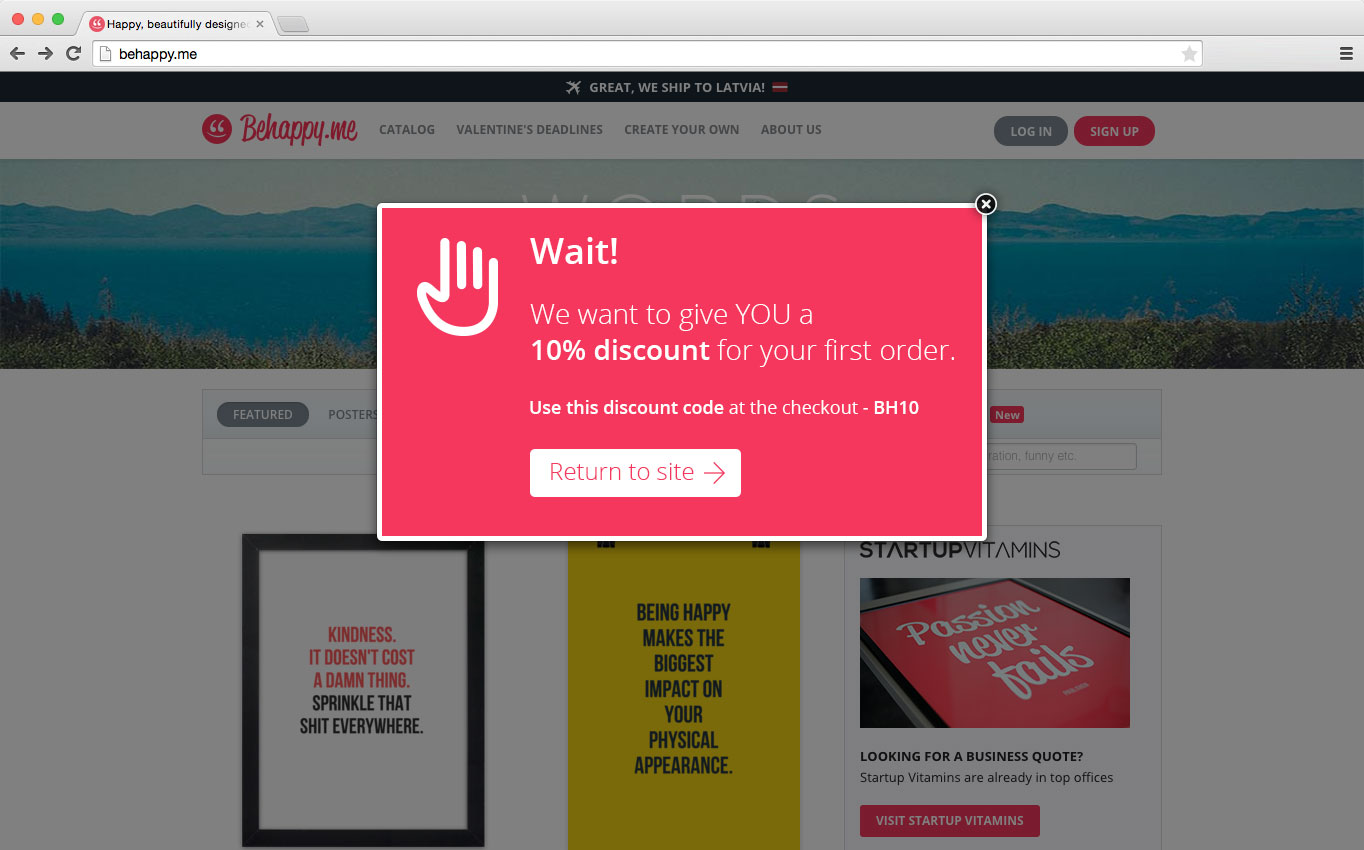
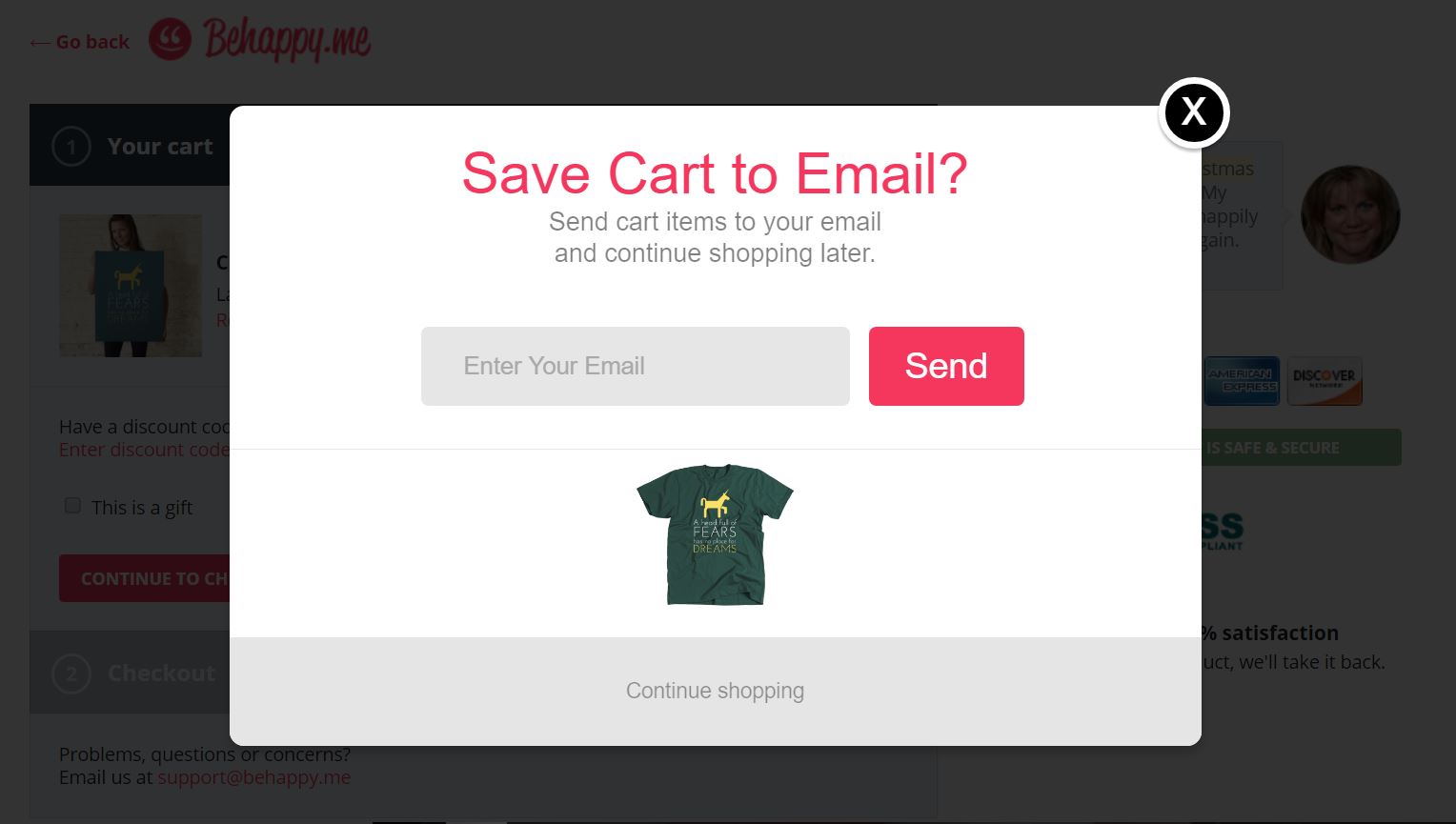
#2: Let Customers do the Work
The IKEA effect shows that people have a tendency to believe something is better if they had a part in creating it, even if it is measurably inferior.
For example, if you build a desk from scratch or paint a painting, you’ll be biased to think it’s better than it actually is.
IKEA asks customers to assemble the products they sell, and have enjoyed amazing success. Here’s how to use the IKEA effect for conversion optimization:
Let your visitors have a hand in creating the product you want them to buy.
If you’re selling a product, provide opportunities for people to customize their order.
Additionally, ask your visitors for feedback on how to make your product or service better. They will feel like they are participating and you’ll come away with ideas for improving things. If possible, let them know if their suggestion does make a difference.
Online service businesses have an advantage: their customers can start using their account immediately. Get the customer to use your service right away to engage this persuasive technique.
The Tactic in Action
Buffer and Canva both do a great job of this – as soon as you create an account, they encourage you to schedule a social media post or create a graphic immediately.
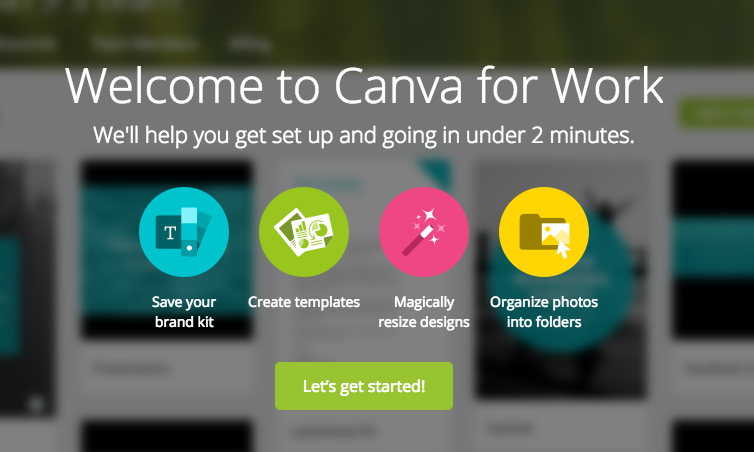
#3: Mimic Your Customers
According to psychology, mimicry is our tendency to mimic other people’s behavior, often subconsciously. When others mimic our behavior, we tend to like them more.
Mimicry is an excellent persuasion technique for face-to-face sales, but it can also be used to improve your conversion rate.
- Use the same verbiage your customers use when describing your product or service. While you can’t reflect a person’s behavior through a web page, you can reflect their language. Learn the tone and vocabulary of your readers by reading reviews, studying chat transcripts and observing them on social media. Create and send a survey to customers and use open-ended questions.
- Show users when their friends have purchased something. You likely need data from Facebook for this one, but if you can get it, your visitors will tend to mimic the behavior of their friends and buy.
The Tactic in Action
Amazon lets you to sign into Facebook to see what kinds of products your friends have saved and purchased.

Amazon lets their visitors get the crowd involved.
Here’s another example, this time of using customer language: WebEx is a company that provides “VOIP and video conferencing” for long-distance online meetings.
But, they don’t say that on their homepage. Rather, they use the exacts words their customers use to describe them: “Connect with anyone, anywhere, any time.”

WebEx uses the language of their customers.
#4: Be Easy to Remember
When we use humor in our advertising, we are trying to be memorable. We inadvertently apply the availability heuristic. It states that people place importance on information they remember, simply because they’re able to remember it.
We also tend to place importance on new information, just because it’s fresh in our minds.
To capitalize on the availability heuristic:
- Use case studies from familiar clients. If your visitors recognize your client, it will increase the chance they’ll remember you when they see that person again – and the chance that they’ll see you as important.
- Use memorable anecdotes and humor on your landing pages and in your copy. This will also increase the likelihood of being remembered and, thanks to the availability heuristic, of being deemed important. Making your customers laugh increases their level of trust in you.
- Tie your offer to an emotion. This can be difficult to do, but emotions are remembered longer and more vividly than facts.
This Tactic in Action
Where most sites simply drop SEO terms on the page, Shinesty.com uses them as an opportunity to be memorable.

Shinesty: Humor in marketing makes you memorable.
#5: Group Your Product With Others
The cheerleader effect plays on our subconscious belief that people are more attractive when they’re in a group.
How the heck does this apply to conversion optimization? Because, it also applies to products and services.
To utilize the cheerleader effect for persuasion:
- Get your product on comparison shopping blogs and lists. When you’re among a group of competitors, your product actually looks more attractive! This is especially true if you’re not as well-known as they are.
- Group up with non-competitors in your niche. Give away their ebook or a free trial to their tool with a purchase from your site. This is a win-win-win: People will see your product as more attractive and the overall deal as better due to the bundle, plus you get to develop a strong business relationship.
The Tactic in Action
A great example of the cheerleader effect in action is EOfire’s partnership with Organifi, a green superfood powder. If you buy Organifi’s powder, you get EOfire’s Freedom Journal to go with it (the journal is meant to help you accomplish your no. 1 goal in 100 days).

Groups of anything can increase receptivity.
The combination makes a lot of sense (eat better and accomplish a goal of being healthier) and makes the overall package more attractive.
#6: Give People a Trivial Extra Choice
Hobson’s +1 choice effect found that people want the autonomy and freedom of having choices, but any more than two choices can cause anxiety and negative feelings.
What does this mean for conversion optimization?
- Offer another choice beyond simply buying a product. For example, you could give them the option to share it instead. When presented with these options, the brain must go through the choices: Buy, share, or don’t buy. By the time they get to the third option (don’t buy), they’ll have more mental fatigue, increasing the chance they’ll say yes to one of the first two options.
- Offer two related products in a pop up window. If a visitor chooses not to buy, present them with further options which will continue to increase their decision fatigue, meaning they have a lower chance of saying “no”.
Pro Tip: Make sure the choices are trivial, and preferably lead to the same outcome. For example, share on Facebook or Twitter? Checkout with a credit card or PayPal?
The Tactic in Action
The Wheel of Persuasion ran an a A/B split test on an energy company called Essent. They found that adding social sharing buttons to their landing page increased conversions in new visitors, but decreased conversions in return visitors.

Adding the option of social media sharing pushed the “don’t buy” decision back.
They believe it was because return visitors are more focused on the goal, so the sharing buttons distracted them rather than helped them make the choice. If you can, find a way to only display the extra options to new visitors.
Related: Check out these click-worthy examples of persuasive copy for online ads
#7: Use the Scarcity Effect
You’ve likely already heard of this technique, as it’s well-documented and known to be highly effective. Scarcity states that people place more value on limited resources.
We’ve already covered scarcity in-depth in another post, but I’ll give a few highlights here:
- Set a countdown timer for a sale to end. Like, “50% off ends tonight at midnight!”
- Show the limited quantity you have available. If you only have 10 left in stock, highlight that fact.
- Give a deal to a limited number of customers. Something like, “First 50 purchases get a free doo-hig!”
Pro Tip: If you’re going to use scarcity, stick to your word! People aren’t stupid, and they’ll find out (and take advantage) if you’re bluffing. Lying could ruin your rep, as well.
The Tactic in Action
Booking.com is an online hotel booking company. They use scarcity brilliantly by alerting visitors when availability is low or certain rooms are in high demand. They even further prod visitors to action by telling them they can always cancel later, a tactic called risk reversal.

Scarcity is a tactic that booking.com uses liberally.
#8: Incentivize – But Not Too Much
The Yerkes-Dodson law states that arousal increases performance, up until a certain point where it hurts performance. If the task is very simple, arousal can continue to improve performance, but it will likely plateau.
Here’s a chart to help you understand it:

Push the arousal, but not too much.
To use this persuasion technique on your website:
- Add incentives to physical product purchases. Since most physical purchase decisions are simple tasks, anything you can do to increase arousal will improve conversions.
- Offer fewer incentives with information-dense or complex purchases. If you’re selling a course, for example, offering too much information or too many bonuses will lower conversions. Test the number of incentives to find what’s right for you.
Pro Tip: To come up with bonuses to offer with product purchases, ask yourself: “What’s something that my customer could find extremely useful after using my product?” or “What are the next steps after they complete the purchase, or finish using the product?” Give them that!
The Tactic in Action
Neville is the creator of Kopywriting Kourse, an online course that teaches you how to write damn good copy. He uses incentives to draw people in and show the full value, but also doesn’t go overboard. Notice he also lists the monetary values:

Adding valuable bonuses increases arousal. To a point.
#9: Take a Page From Poker’s Book
Have you ever seen someone continue to gamble after they won in the hopes they’ll win again? That’s the Hot-Hand Fallacy: The belief that by succeeding at a random outcome makes you more likely to succeed again, despite the outcome being random.
How do you use this technique?
- Have your visitors complete a simple, impossible-to-fail task when they reach your site. For example, have them click a button to see if they won a prize (and make it so they always win a prize, even if it’s just a 1% discount). Or, give them a quiz to fill out.
- If you sell an info product, highlight your successes. Show off PR, upcoming speaking engagements, major clients, etc. Due to the hot-hand fallacy, visitors will believe you’ll continue to be a successful company due to your recent success.
The Tactic in Action
Zennioptical’s You’ve Been Framed quiz has generated over 31,000 leads and over $1 million in revenue!

Giving visitors some small winning hands may keep them at the table.
#10: The PAS Formula
PAS stands for problem, agitation, solution. It works like this:
- Identify a problem your reader has.
- Agitate that problem.
- Provide the solution (with a CTA, of course).
It all comes down to great copywriting. Let’s look at an example:
Are you suffering from no blog traffic? You’ve tried everything to get people to read your content. You’ve shared it on every social media platform. You’re wondering, “does my blog suck?” Well, it might suck. But, you’ll never know until you learn the effective promotion strategies to make that sucker visible. It all starts by watching our latest video.
Notice the bold text. It starts with the problem – no blog traffic. Then, it aggravates the problem – saying the blog might suck. Finally, it ends with a solution – learn effective promotion strategies by watching our latest video.
The Tactic in Action
Basecamp literally uses this exact tactic on one of their landing pages:

Basecamp uses the classic Problem-Agitation-Solution persuasion technique.
#11: Label Your Customers
You don’t want to put labels on people, right? Well actually, you might.
One study found that adults who were randomly labeled as “politically active” were 15% more likely to vote than those without labels. It likely has to do with the consistency bias. We want to appear consistent with how others view us.
This means that by labeling your customers as environmentalists, for example, they’ll be more likely to purchase your eco-friendly products.
You can do this using case studies, by tagging people on social media, and through your emails. Say things like, “Hey, I know you’re a puppy lover. I can tell by the photo you shared on Instagram. As a puppy lover, I think you’ll really like this.”
Even if they didn’t originally see themselves as having that label, they are likely to believe it if you can prove it’s backed by their actions.
The Tactic in Action
Apple, the titan they are, uses a whole slew of persuasion techniques. They label their customers as “high-tech”, “quality-focused” and “cutting edge”. It’s working well for them, don’t you think?
#12: Don’t Use Faces (Unless They’re Well-Known)
Facial distraction is a real thing. We have a tendency to look at and identify faces before anything else. The implications?
Faces can distract our visitors from the copy we worked so hard on.
That said, there are three ways to use faces on a landing page that may be beneficial:
- Using well-known industry authorities. Seeing well-known people backing up your brand will build customer trust. You would consider people like Neil Patel if you’re talking about internet marketing, or Brian Dean if you’re talking about building backlinks and SEO.
- Putting faces near a call-to-action. Because our eyes are drawn to faces, we can use them strategically to draw those eyes to our CTAs. If a person is seen on a page looking away or pointing, we are compelled to look that direction.
- Putting faces in your videos. Putting them on a page can be distracting, but faces affect us in videos as well! Use faces for engagement, but take them away when you want the customer to buy.
Avoid stock photography of smiling, pretty people.
The Tactic in Action
Noah Kagan, creator of SumoMe, uses testimonials a lot. On the landing page for his headline optimizing tool, he uses a testimonial from entrepreneur Brian Harris to increase conversions.

Eye-tracking studies show the power of a gaze.

This eye-tracking study show how our eyes follow the gaze of another face. Source
#13: Stand for Something
A study on people who have a strong relationship with a single brand found that over 64% said it was because they had “shared values” with the company in question.
In other words, people like being associated with brands that share a common goal. This isn’t groundbreaking news, but it shouldn’t be taken lightly, either.
In order to capitalize on this, start showing your values through your company. Here’s how:
- Pick a charity you’re passionate about and donate a portion of sales. Heck, it doesn’t have to be money – donate goods, instead.
- Create your own charity work. Get involved in your community to help clean trash, paint over old parks, or fix fences. Just be sure to tell people about it on your website to get the benefit!
Of course, doing this kind of charitable work should be done out of a genuine desire to help, but doing good for the world brings dividends back to you.
The Tactic in Action
By December of 2016, eye-wear site Warby Parker claims to have donated one million pairs of glasses prescription glasses to those in need through its Buy One, Give One program. It seems to be working based on their growth.

Warby Parker matches your purchase with a donation.
#14: Disruption Through WOW
This particular idea is backed by the reciprocity principle. Basically, you disrupt your customers by providing them with an incredible experience.
Truly WOWing a customer is a foolproof way to earn their trust and return business.
In fact, a study done by psychologist Norbert Schawrz found that something as little as a dime can improve a person’s mood significantly. If 10 cents can have such a huge effect on us, imagine what a truly great experience can do!
Here’s what to do:
- Provide excellent sales support for your products. Be ready to answer people’s questions using phone, email, or a live chat app such as Formilla, as they browse your landing page. Be prompt to respond and thorough in your answers. Try to entertain them as well!
- Give customers a surprise bonus at checkout. This could be a free guide, surprise discount, or welcome video to help them get started.
- Run high-value webinars. Webinars are conversion machines, but to do them right, you need to provide massive value. Give away some of your best stuff for free.
The Tactic in Action
Zappos, a shoe company known for their incredible focus on customer service, frequently surprises their customers with free overnight shipping. While it may not increase their initial conversions and costs them extra, it brings dividends in return customers who will come back to them for life.
#15: Don’t Be Ambiguous
According to Ambiguity Aversion, we prefer known risks over unknown risks.
In other words, if given a choice between a path where we know the exact outcomes and one where we don’t, we’ll usually pick the former.
To use this to your advantage:
- Be specific and detailed about what, when, why and how. Your customers should know exactly what they’re getting, when they’re getting it, why they need it, and how it works.
- Highlight your guarantees. If you have a return policy or guarantee, make it big and bold. Make sure your customers know about it.
- Review your site for uncertainties. Go through the buying process and see if there’s anything not obviously clear to you about your product. Get someone else who didn’t create it to do this as well, to get an extra perspective. Fix those uncertainties.
The Tactic in Action
Any business that offers free shipping or flat-rate shipping is removing ambiguity. Sure, the customer may feel that they are getting a discount, but the elimination of the ambiguity of shipping is a powerful motivator.
Bombfell ships clothing to you to try and buy. Shipping is removed from the equation. They cover it both ways. They remove all ambiguity when they ask for your business.

Four sentences remove the ambiguity from the this offer.
#16: Be Cheesy
According to the Eaton-Rosen Phenomenon, people tend to remember and believe things that sound good, like rhymes or antimetaboles.
(In case you’re wondering, an antimetabole is a literary device in which you repeat a phrase in reverse order, like “If you fail to plan, you plan to fail.”)
So, yes – be cheesy! Come up with funny yet memorable lines using rhythmic poetic verses. It will make your copy, your brand, and your offer, more memorable (and more fun).
Remember: If it rhymes, conversion climbs!
The Tactic in Action
Animoto used a rhyme on their landing page:

This little rhyme tickles the brain.
#17: Use Generic Personality Descriptions to Draw People In
According to the Barnum Effect, people tend to believe that vague personality traits that apply to a lot of people actually fit to themselves.
For example, a generic personality test might tell you something like, “You have a great need for other people to like and admire you. You have a tendency to be critical of yourself. While you have some personality weaknesses, you are generally able to compensate for them.”
Nearly every person in the world fits these traits. But, people don’t pick up on the generality of them, and tend to agree with and fit themselves to them.
What does this mean for your landing pages?
- Use general questions that apply to most of your target demographic.
“Do you hate losing money?”
“Do you want to spend your time wisely?”
“Do you want to be happy?” - Describe your product as a perfect fit for the average of your target market. “Perfect for people who are highly critical of themselves.”
“Perfect for people who are tech-savvy and entrepreneurial.”
The Tactic in Action
Buzzfeed continually uses the Barnum effect really well with all of their online quizzes.

Buzzfeed uses personality tests take advantage of the Barnum Effect.
#18: Show People How Your Product Makes Them Sexy
Sex & Signalling is the idea that everyone wants to be perceived as a great mate. They want to be perceived as being well off financially, smart, conscientious, physically fit, agreeable, etc.
Tell people how your product will improve their ability to attract a mate.
Of course, you don’t want to actually tell them you’ll help them find a “mate”. Instead, explain how your product’s benefit will make them smarter, wealthier, or more fit – They can connect the dots to being a better mate themselves.
Conduct research to find out what people associate your brand with.
Send out a survey to your email list, and simply talk to your customers to see what they feel your products do for them. If it’s not helping them be a better person in some way, you may want to change your image.
The Tactic in Action
Manpacks, an “essentials” delivery service, takes the sex & signalling effect literally with this landing page:

Manpacks signals that customers will be lucky in love.
#19: Go With the Status Quo
People fall prey to the Status Quo Bias, any change from “business as usual” is perceived as negative. The phrase, “Nobody ever got fired for buying IBM” means that the best choice is the safe choice. Every industry has it’s IBM.
So, make your business seem as though it’s a safe part of the status quo. You’re communicating that, “Everyone’s using it.” Tell people how many customers you have, if you’re a leader in your marketplace. You can do this by showcasing big names using your product, or by using language that shows you’re part of the status quo.
Additionally, make the purchase process as frictionless as possible. Pre-fill login information for them. If you can’t, allow them to log in using Facebook, Twitter, or Gmail.
If you are the status quo, you must know how to take someone’s money.
The Tactic in Action

Granify makes themselves look like the status quo with their counter.
#20: Catch Them in The Right Environment (Or Remind Them Of It)
The Context Effect states that cognition and memory are related to context. For example, work-related information is easier to access when you’re at work.
- Do your best to advertise to people when they’re in the environment that makes the most sense with your product. If you sell software to help them with their work, sell to them at work. If you sell fitness equipment, get to them at the gym or in their ear through a podcast while on a run.
- Since it’s not always possible to get people at the right time, you can also use wording and imagery to remind them of that context. If you sell fitness equipment, show images of people working out and talk about working out.
- Remind customers of a time when they purchased. “Hey, remember buying our widget this time last month? Time to reorder!”
This persuasion technique gets visitors in the right state of mind and the right context to buy.
The Tactic in Action
Startup Weekend is a conference that helps people begin their startup journey in a few short days. On their landing page, they bold certain words like developers, coders, designers, and marketers. They talk a lot about business and startups to get you “in the mood”, so to speak.

Startup Weekend creates a context with their copy on this page.
#21: Apple’s Ancient Secret Weapon
Apple is a pretty successful company, right?
Their success lies in a persuasion technique that’s over 100 years old. What is this ancient technique?
They show the detailed manufacturing process behind their products.
This tactic persuades people of the quality of their products. Apple did this with their video about the new unibody MacBook.

Apple showed the process when it went to a unibody design.
https://www.youtube.com/watch?v=4GPcUSnKdK4
This works well if your customer is quality-centric. If they’re not, choose another persuasion technique from this list.
Conclusion
There are many persuasion techniques you can use for conversion optimization. Some of them are more effective than others. Some will work for you and others will not.
When it comes to finding which is which working with a top notch Conversion Optimization Agency like Conversion Sciences and doing extensive A/B testing is key.
Keep trying things and you’ll eventually find the optimum combination of images, text, and calls-to-action. Always be trying new things.
What persuasion techniques would you add to this list? Leave me a comment and let me know!
 Bill Widmer is a freelance writer and content marketer. With over two years of experience, Bill can help you get the most out of your content marketing and blog.
Bill Widmer is a freelance writer and content marketer. With over two years of experience, Bill can help you get the most out of your content marketing and blog.

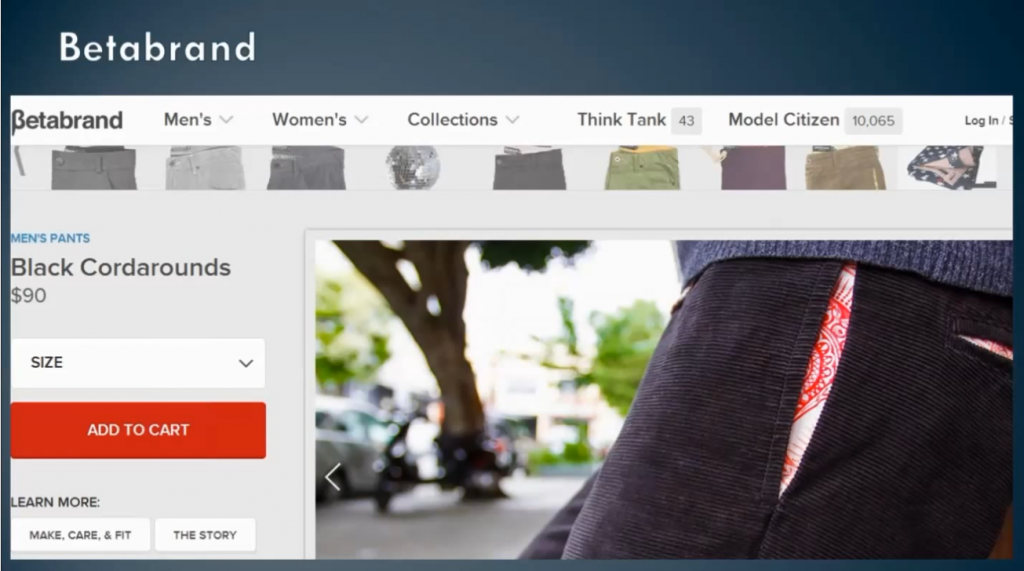
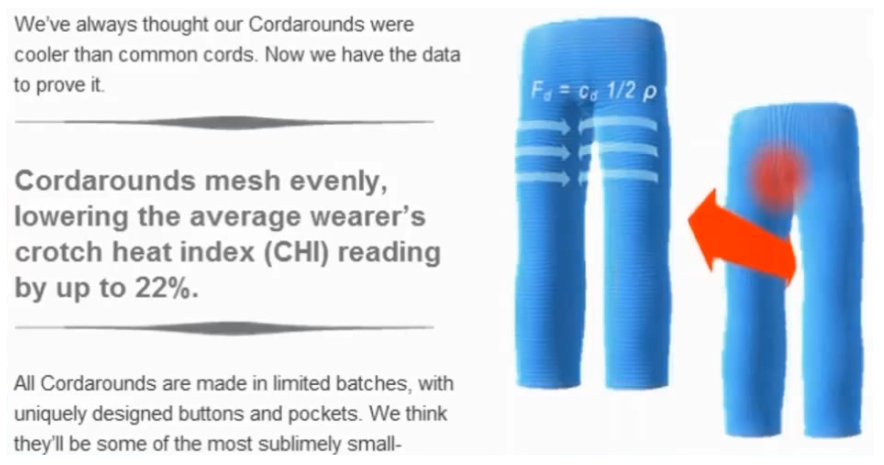
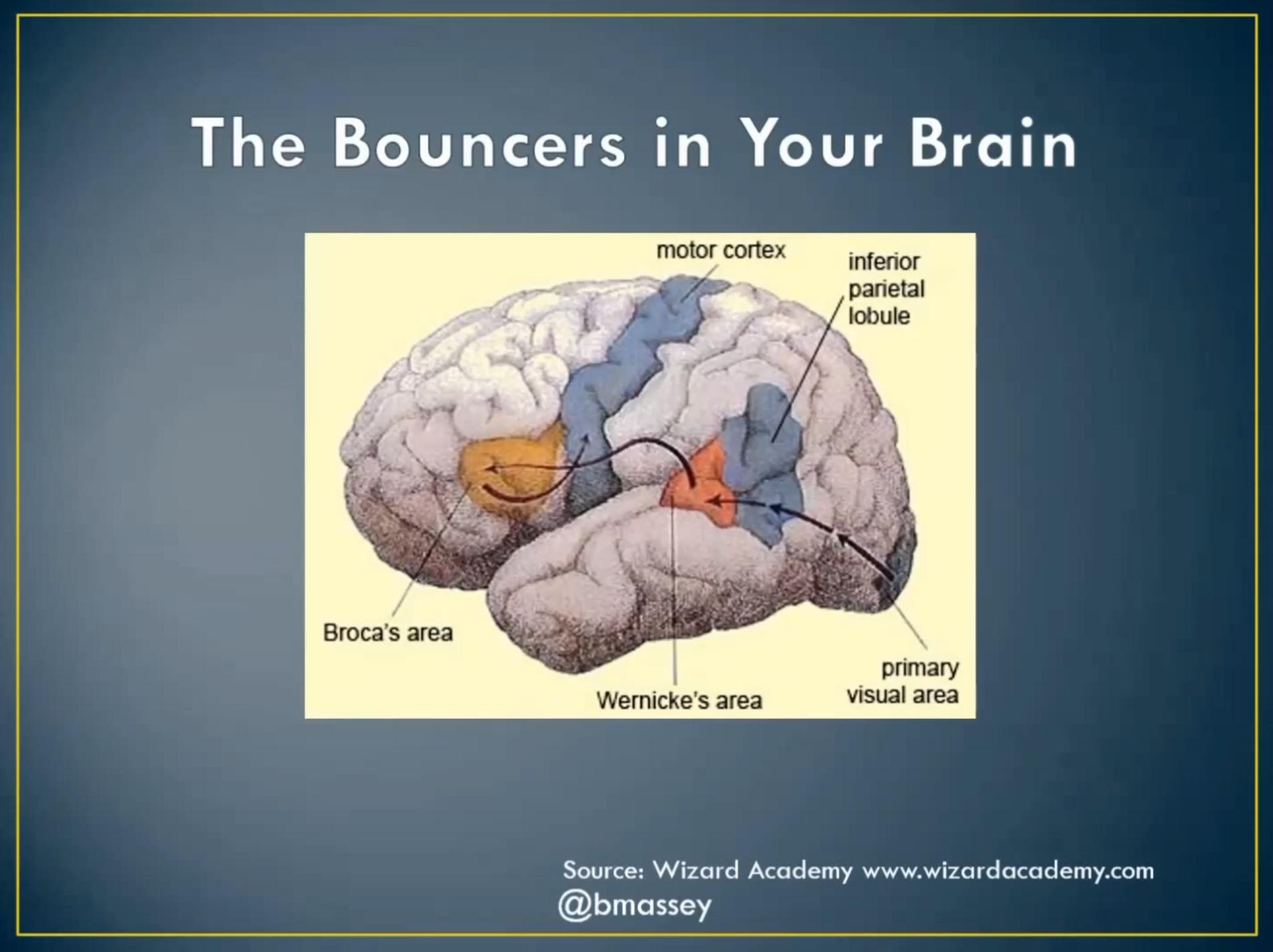



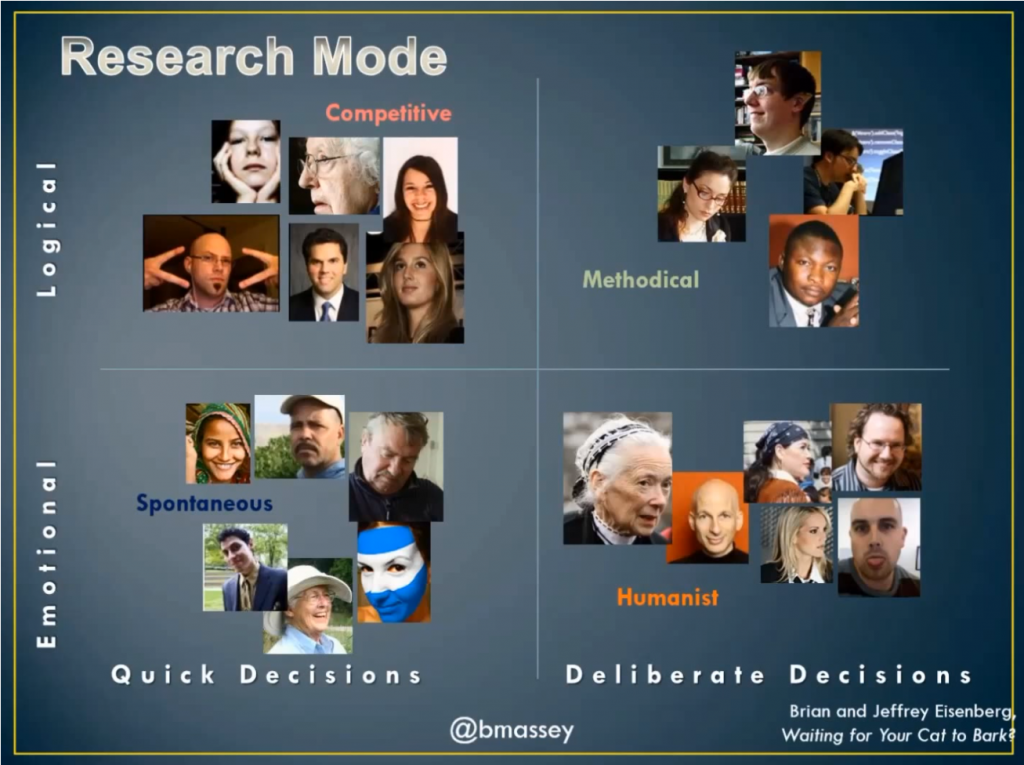
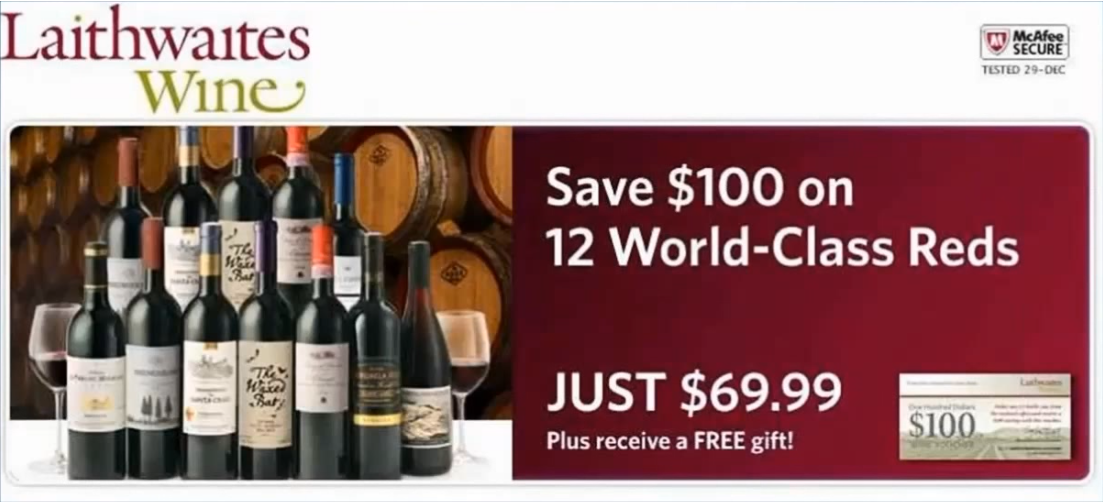



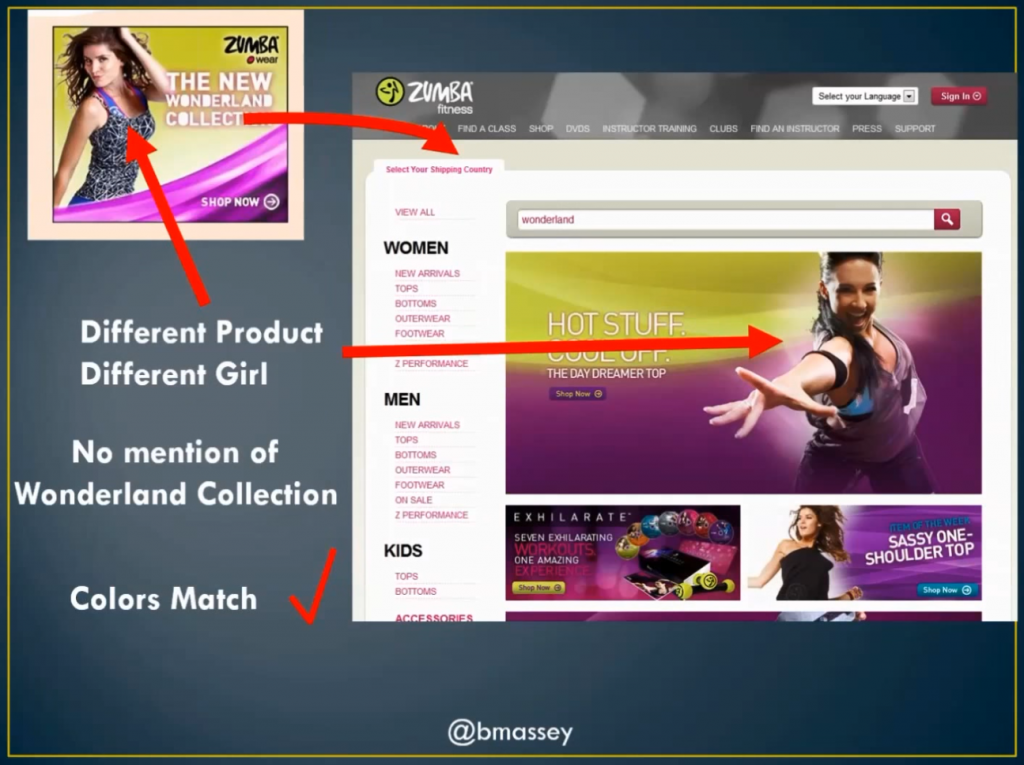
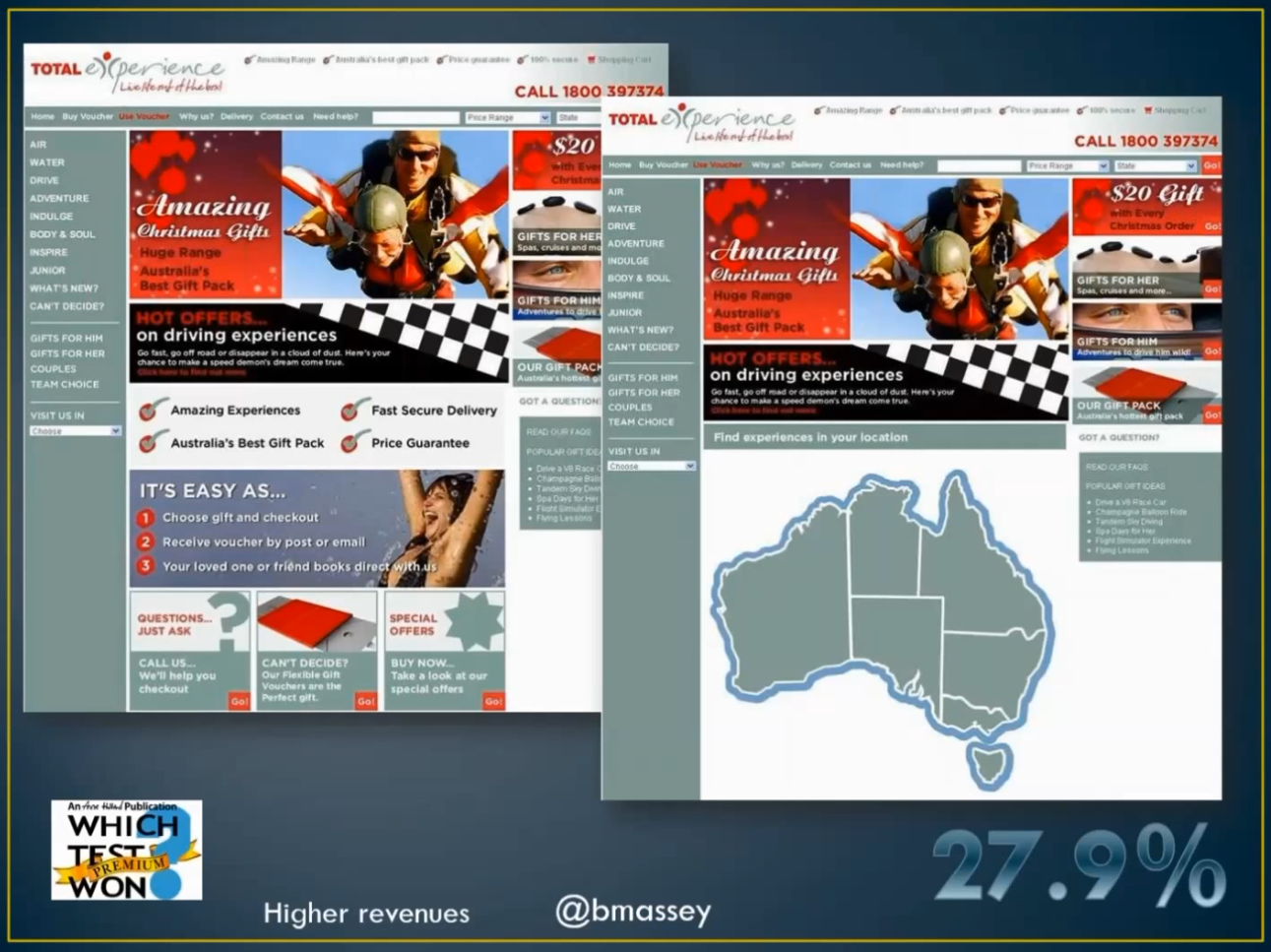



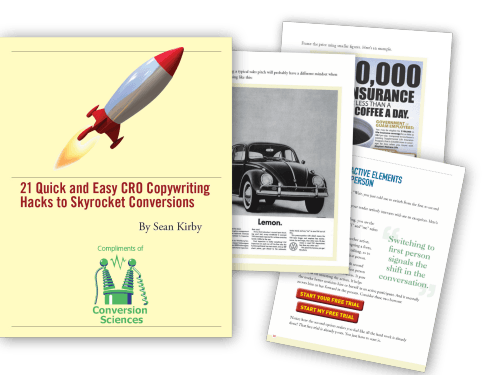














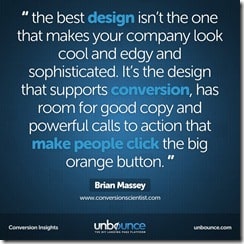
![joanna wiebe Writing Killer Conversion Copy with Joanna Wiebe of CopyHackers.com [Audio]](https://conversionsciences.com/wp-content/uploads/2012/02/joanna-wiebe.jpg)






